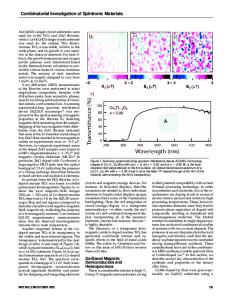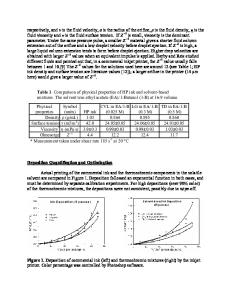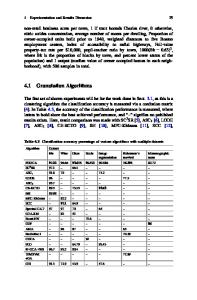Combinatorial Experimentation and Materials Informatics
- PDF / 759,622 Bytes
- 5 Pages / 576 x 801 pts Page_size
- 68 Downloads / 374 Views
Combinatorial Approach to Materials Pioneered by the pharmaceutical industry, the combinatorial method is now widely accepted as a watershed in the discovery and optimization of new compounds. The high-throughput combinatorial approach allows simultaneous synthesis and screening of large arrays of different materials. In recent years, the scope of the combinatorial strategy has rapidly expanded beyond drug discovery, and there have been significant advances in its application to the development of new polymers, catalysts, and materials for electronics1,2 (see the April 2002 issue of MRS Bulletin on Combinatorial Materials Science). In any materials synthesis procedure, there are a number of parameters, independent and interdependent, that govern the formation and properties of the resulting phases. When such experiments are carried out in an ordinary one-by-one manner, subtle experiment-to-experiment variations in process parameters could potentially lead to significant deviation from the expected behavior. Such a problem can be circumvented by the use of the highthroughput approach, which allows rapid
and systematic navigation in a multidimensional parameter space, producing statistically higher-quality data. In a combinatorial setting, up to thousands of different stoichiometries, encompassing a wide compositional landscape, are synthesized in parallel. New characterization and screening techniques capable of handling combinatorial libraries and composition spreads have emerged, and most of the physical properties that are critical for the development of new materials can now be quickly mapped with a throughput rate that matches the synthesis process. Depending on the exact nature of the measurement scheme, enormous amounts of physical property data can be amassed from a single combinatorial library. Systematic materials characterization data can be used to formulate strategies for optimizing a product or constructing models of underlying physical mechanisms that govern the materials properties. Data-mining techniques can facilitate this process, so that one can visualize large and complex data sets, extract structure– property and process-parameter–property
MRS BULLETIN • VOLUME 31 • DECEMBER 2006 • www/mrs.org/bulletin
relationships, validate physical models, and so on.
Data Management and Data Mining Until recently, mining of materials data has been a daunting task, because the only way to assemble data sets with sufficient volume has been to extract measurement results from a large number of publications. This task is time-consuming, and it is often impossible to evaluate the reliability of individual data points because measurement and sample preparation techniques may vary. High-throughput parallel synthesis and characterization of samples can, for the first time, solve this problem by creating model data sets of systematic materials data covering large composition and parameter spaces. Data mining in materials science can be implemented on a number of levels. In the simplest case, visualization, analys
Data Loading...











